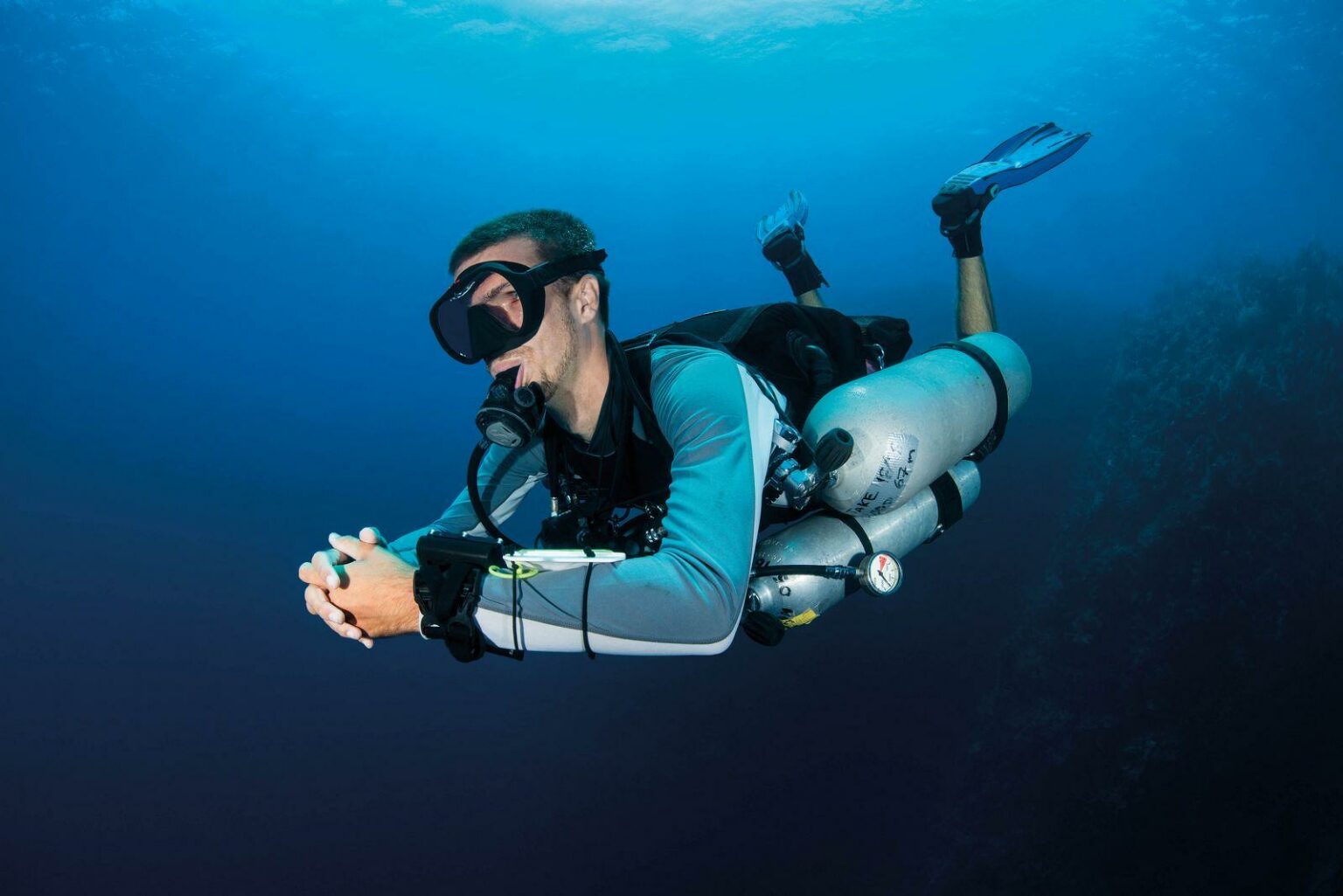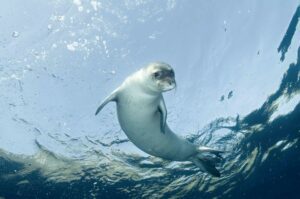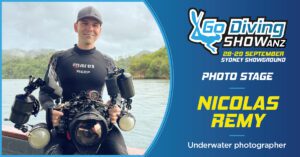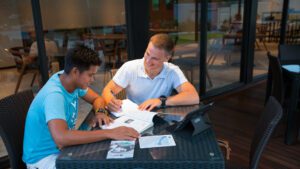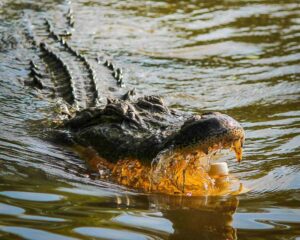Utila Dive Center: Technically Speaking
The small but not so insignificant island of Utila is a popular choice for diver training, particularly PADI Divemaster and Instructor internships. Most of the activity seems to focus around Utila Dive Center, (www.utiladivecenter.com), owned and run by PADI Course Director Andy Phillips. I even recommended my own daughter sign up for her Divemaster course with Utila Dive Center, so the training must be half decent!
Situated in the Caribbean Sea approximately 18 miles from Honduras, it’s not the easiest place to reach from the UK (two flights and either a boat ride or another short but very memorable flight in a light aircraft), but this doesn’t seem to discourage visitors. As a stop-off point on the Central America backpacking route, the island attracts a mix of nationalities from Europe, Scandinavia, USA, Canada and South America, the majority being in their late-teens and early 20s.
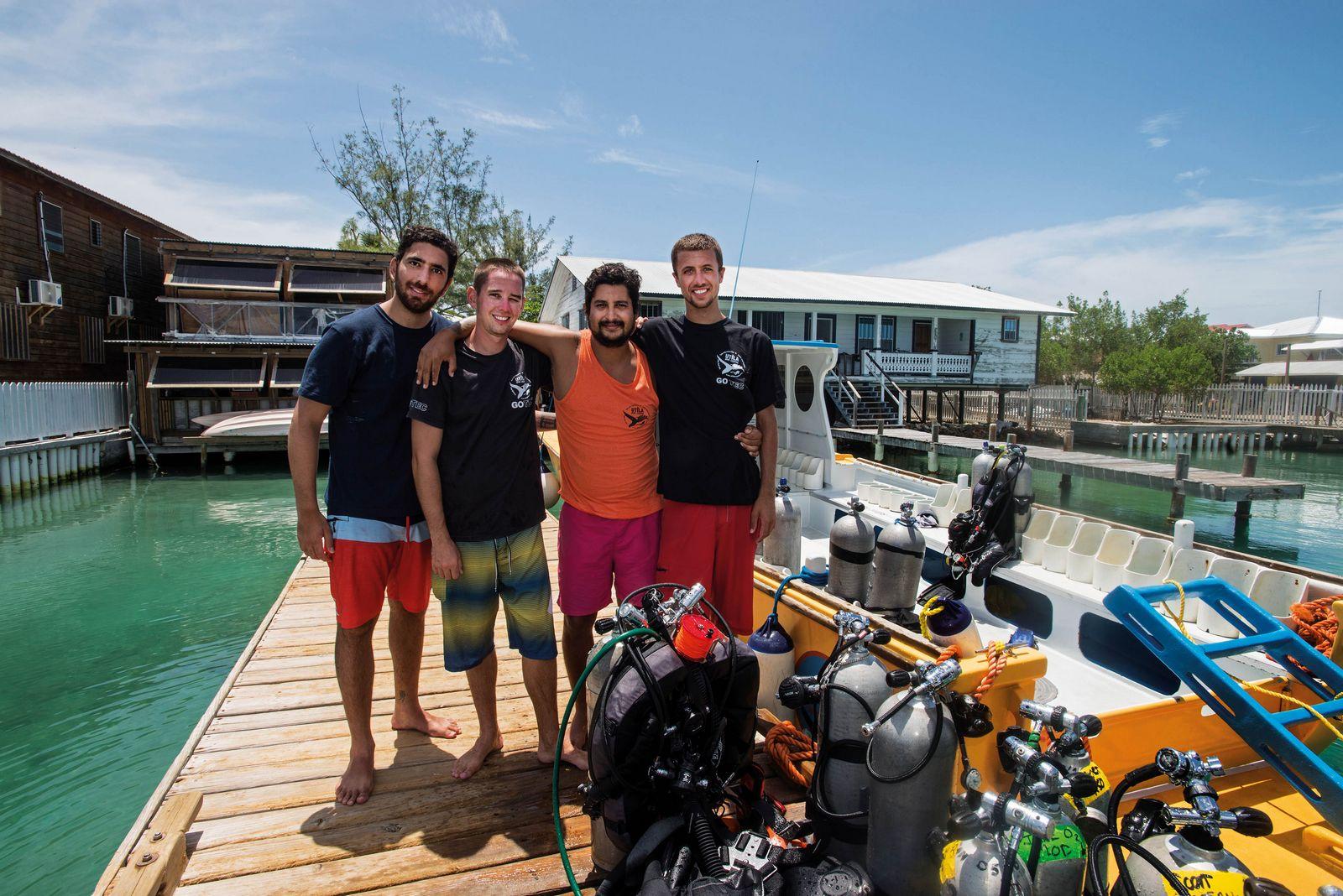
Utila Dive Center is some way off the mass tourism beaten track, I didn’t expect to find a full blown tech-diving centre offering the complete range of ‘toys’ from OC twinsets, sidemounts and stage cylinders to closed circuit rebreathers (CCRs). I met up with Brit Scott Peaker and Canadian Jake Bulman, who seemed to share Utila Dive Centers tech-diving workload between them. Scott offered to guide me on a trimix dive, leaving Jake to follow up with rebreathers, and if there was time, sidemounts. I had a quick tour of the facilities and counted at least five twinsets, three sidemount rigs, umpteen deco cylinders and a rack loaded with O2 cleaned regs for rent.
For the past two years, Scott has been running tech deep trimix courses about twice a month and sidemount courses three or four times a month. He usually conducts training dives at sites on the north side of Utila. CJ’s Drop Off is one of his particular favourites. Scott said: “When you arrive at the dive site, the wall is right there and goes all the way down past 90m”.
Scott shared space on the same dive boat used by recreational divers. This was the ideal place to attract new customers. Utila Dive Center run instructor courses every month and qualify over 100 new instructors each year. Number two resident PADI Course Director Susie Phipps said: “It’s the perfect selling machine. It’s easy to add on sidemount and rebreather courses after the IE has finished”. Everybody watches the tech divers going through briefings, kitting up and then disappearing into the deep blue. This naturally generated curiosity and interest. Scott said: “We pick up a constant flow of work”.
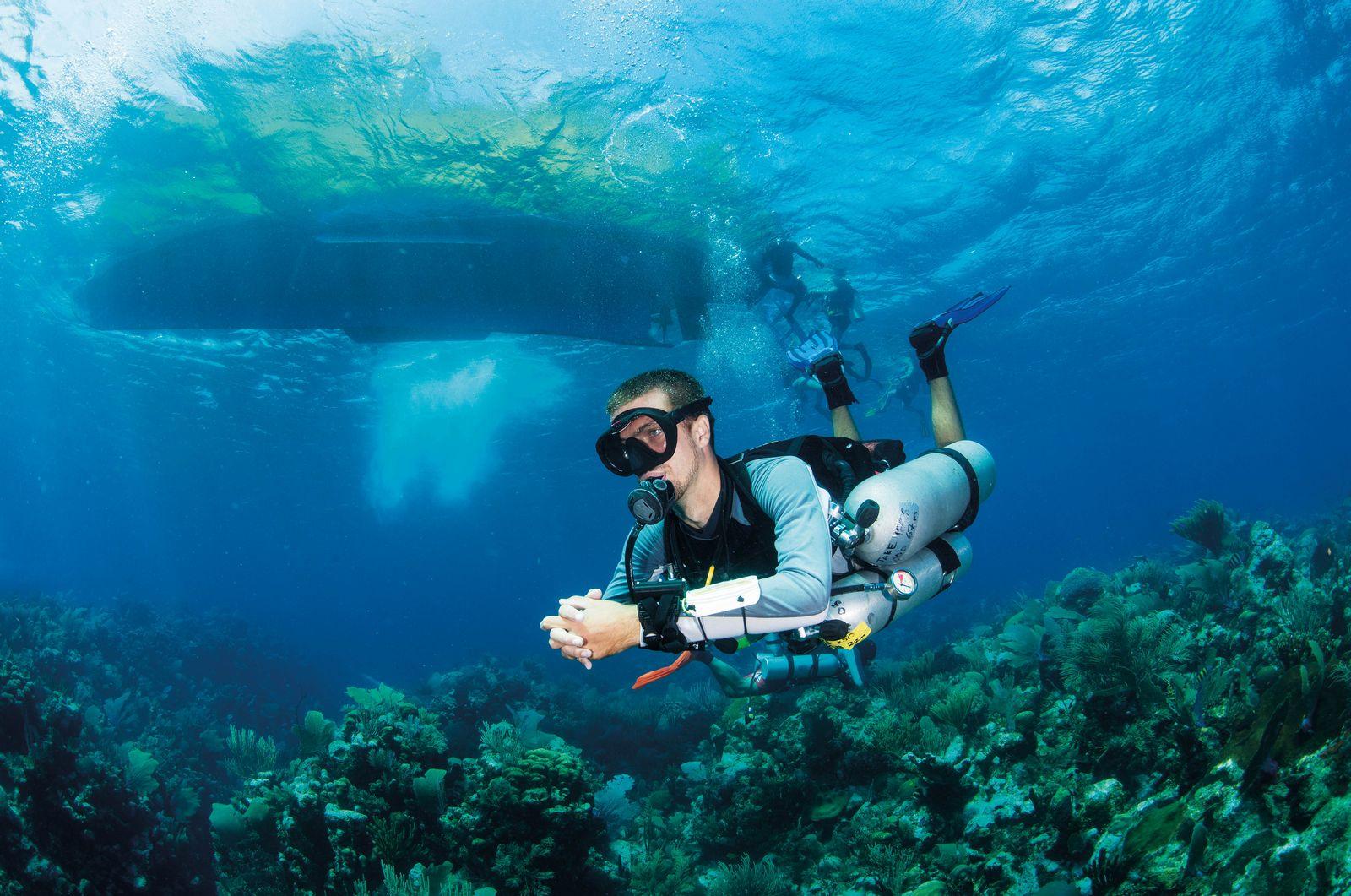
Scott began diving in Fiji while working on a reef conservation project. In two years he progressed to PADI Divemaster certification. Scott then moved to Utila and completed his tech training and to date has logged over 250 tech dives. He said: “I love being able to explore and see places that only a few people are able to go. Tech opens up a whole new side to diving, from thoroughly planning dives from start to finish to using all the different gear and a variety of gas mixtures. It also allows you to build a strong network of friends”.
I sat down with Scott and Jake to discuss the plan. Our objective was to locate and enter CJ’s Cave at a maximum depth of 60m. Scott said: “No one ever visits the cave as it’s so deep”. Our gas mix for the dive was a 20/20 with deco gases 50 percent and 100 percent 02, with a total dive time of 60 minutes, so nothing too strenuous or too time-consuming.
Scott and Jake had never dived with me before, so were naturally concerned about my safety. It’s worth mentioning that Utila does have an on-site 24-hour deco chamber in case of any emergencies. Admittedly I hadn’t been tech diving for a few months and felt a little bit rusty, so was more than happy to follow their guidelines to the letter. Scott gave a thorough briefing with no skimping on information. It felt like a simulated dry run of the entire dive! I could see that Scott was extremely conscientious. I’m certain he went through the same procedure with everyone he guided or trained.
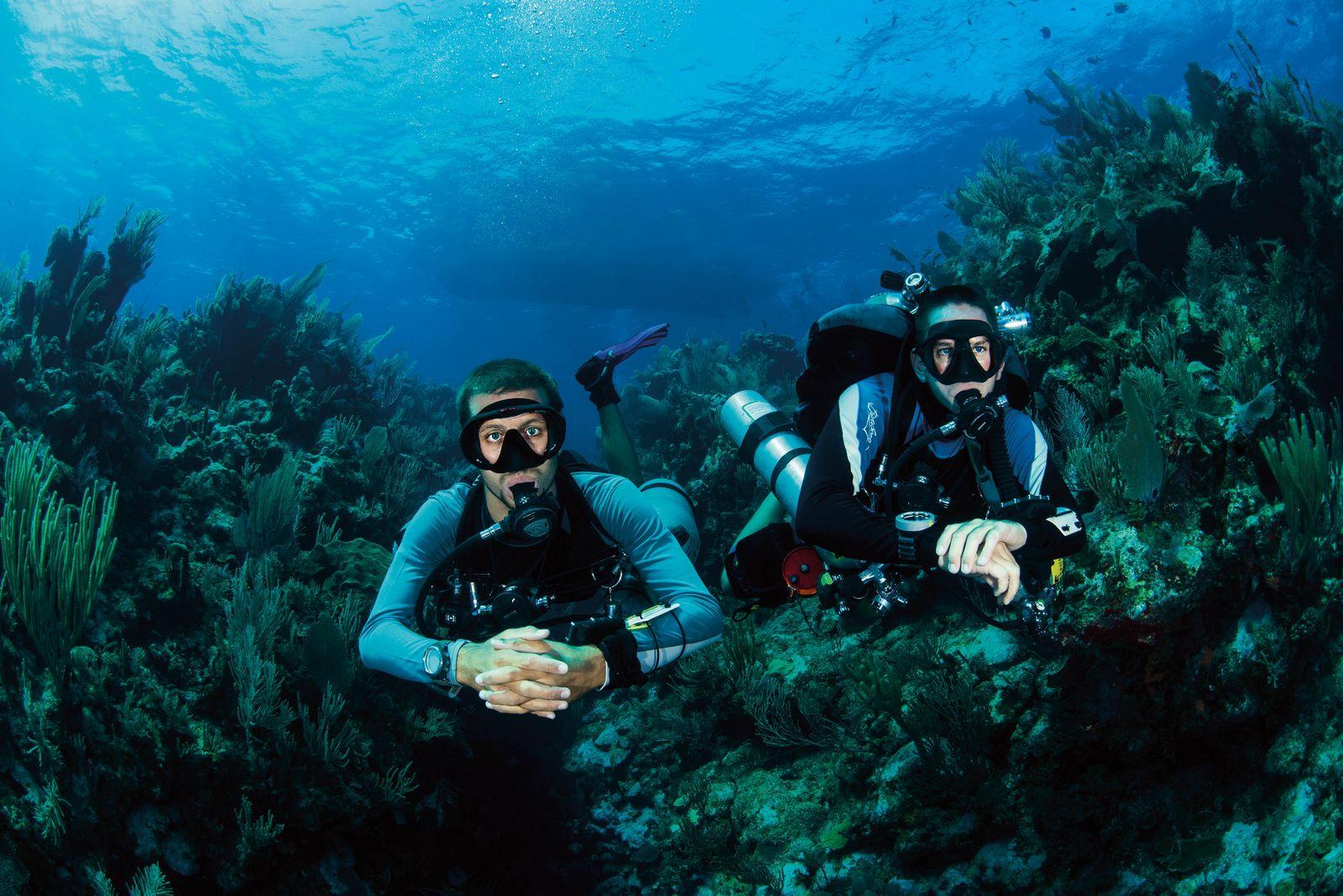
We had all turned up wearing multi-coloured board shorts and rash vests. There was not one single piece of industry-standard ‘tech black’ gear to be seen. Scott was concerned that this would somehow make the dive seem less ‘technical’ to the outside world, but the water temp was hovering around 30 degrees C and only dropped by a degree or two at our target depth, so I didn’t see there was a problem. We were all dressed suitably for the environment – totally awesome, dude! This was my first-ever tech dive without wearing any kind of suit protection and it felt quite strange, but on the other hand less restrictive and quite similar to ‘going commando’!
During the 45-minute boat ride to CJ’s Drop Off I had plenty of time to survey the palm-fringed coastline. Around Eastern Harbour there is a good variety of bars, restaurants and white sandy beaches on offer. Every night of the week I could find at least one place offering a happy hour for drinks or a two-for-one on food, which helped save a few dollars.
On the descent I could tell my trim needed some fine-tuning. I felt slightly inverted, and when laden down with stage cylinders, this made finning harder than necessary. Tech gear should always be comfortable but due to time constraints, I’m usually being thrown in at the deep end (literally), which means getting used to unfamiliar kit configurations rapido.
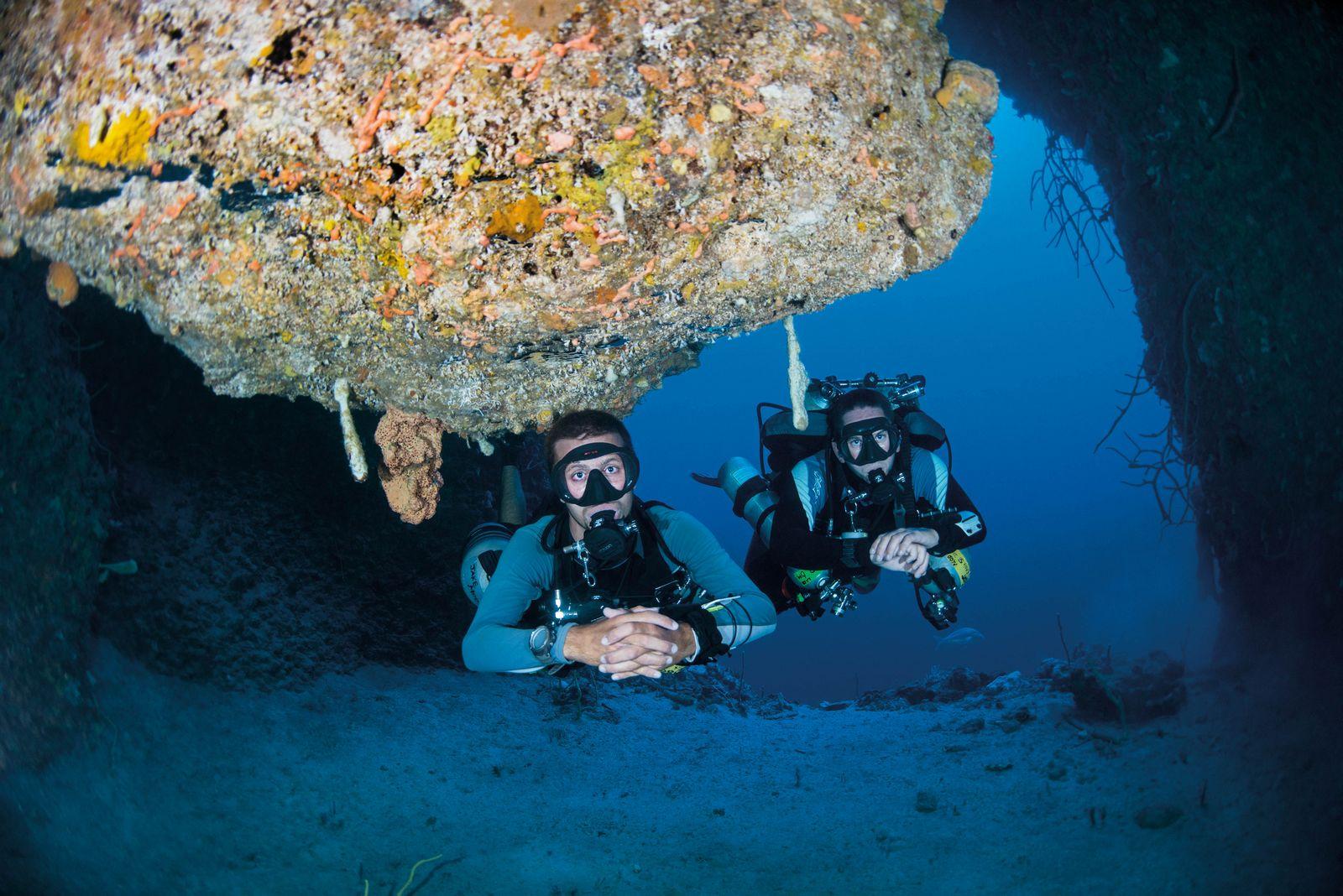
Just to wish us bon voyage, a friendly hawksbill did a fly-by. I was in two minds whether to deflate my BCD and chase after the turtle, but this was a serious tech dive with a planned run time, so thought better of it. I had to keep focused on the dive and stick to the plan.
I followed behind Scott and Jake as we made our descent on the near-vertical wall. With visibility topping 30 metres, it was very dramatic looking back up at the surface. Scott said: “I always get my students to look up as the wall actually overhangs slightly and towers over the top of you, making you feel tiny down there”.
We passed a clump of orange tube sponges protruding from the wall. I kept pace until we reached the cave entrance at our prescribed maximum depth of 60m – in fact, my Shearwater computer was recording bang on 60m. This turned out to be my best picture opportunity, lining up Scott and Jake in the foreground with me wedged inside the shallow cave entrance looking back out into the blue. There was a huge rock formation in the middle of the opening, which added some size perspective, and adorned with colourful sponges, made the shot more interesting. I didn’t have time to fully explore the cave but from what I could see, it didn’t go very far.
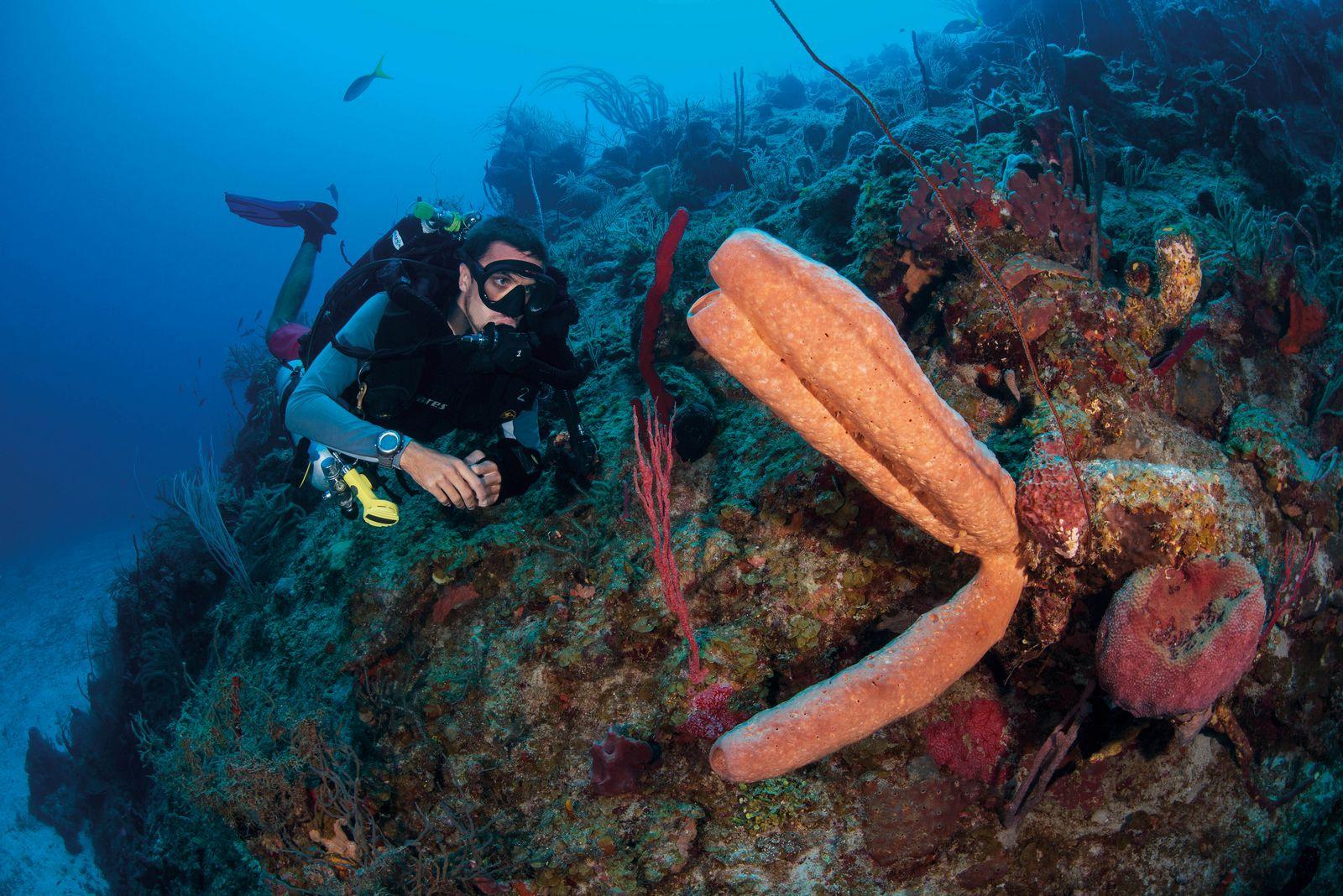
After a short period of time we turned around and headed back the way we came. I stopped at the tube sponges to take another stream of pictures and then carried on up, completing a series of deco stops along the way. Watching the reef inhabitants made the time go much quicker. Back on the surface everybody was smiley faces. The dive couldn’t have gone any smoother from run time to gas management. No matter what the sea temperature, I usually don’t dive in anything less than a 5mm suit, especially on tech dives, but on this occasion the board shorts looked cool and didn’t feel too chilly either!
When I turned up the next morning, Jake had already prepared the rebreathers for our days diving, which made me feel very lazy and inadequate. I had qualified as a TDI Poseidon rebreather diver a number of years ago while visiting the tech centre Dive-In Larnaca, based in Cyprus. Unfortunately, I was in the same situation as the previous trimix dive – I was rusty with the workings of a Poseidon Se7en, so Jake went through all the procedures ‘idiot fashion’ before we entered the water.
Jake learnt to dive in 2014. His first dive was at West Hawk Lake, Canada, in 4 degree C water while wearing a holey wetsuit. This was a complete contrast to wearing board shorts in the Caribbean. He completed his first rebreather dive in February 2015 and became a tech instructor in April of the same year. He has now got almost 130 hours on the Poseidon, and about 60 hours on his personal KISS Sidekick unit, which totals more than 200 logged tech dives. Jake has completed more than 20 CCR courses while working at Utila Dive Center. NB: Since writing this article, Jake has now left Utila and is cave diving in Mexico.
We managed to jump aboard a dive boat heading out to a popular site called Duppy Waters. I noticed that all of the boats had dedicated tech areas for storing twinsets, etc, which was a really nice touch. I personally have about 70 hours experience on a variety of rebreathers, from Inspiration and Megaladon to JJ and Liberty, but I don’t own my rebreather which means I can go several months, sometimes longer, without using a unit. Jake guided me through the pre-breathe cycle and standard Se7en start-up procedure, which is basically follow the instructions on the handset.
The mooring line sits next to the drop-off at a depth of about 8m-9m, so I hovered close to the seabed and spent several minutes just practising buoyancy again. Using standard scuba it’s easy to breathe in and out, thus instantaneously ascend/descend a metre or two. This works well when I’m taking pictures as I am constantly changing position and depth trying to get the best composition. But when I’m using a rebreather breathing in and out doesn’t affect my buoyancy. This isn’t an insurmountable problem, it just requires a different approach and takes a while to get used too. I took a few shots of Jake underneath the boat and then we made a descent along the wall to a depth of around 30m. Jake guided me to a number of overhangs and narrow swim-throughs, which severely tested my recently honed buoyancy skills. I must confess there were probably a few more scuffs and scratches on the unit after my dive!
We finned along the outer edges of the reef admiring the scenery. A solitary barracuda came in for a closer look. I stopped to take some pictures of a large green moray and an inquisitive pufferfish. The lack of noisy exhaled bubbles made the atmosphere seem far more serene. Jake said: “Rebreathers are so silent. It makes swimming through a cave or floating around in the ocean a whole different experience. You can hear your heartbeat sometimes”.
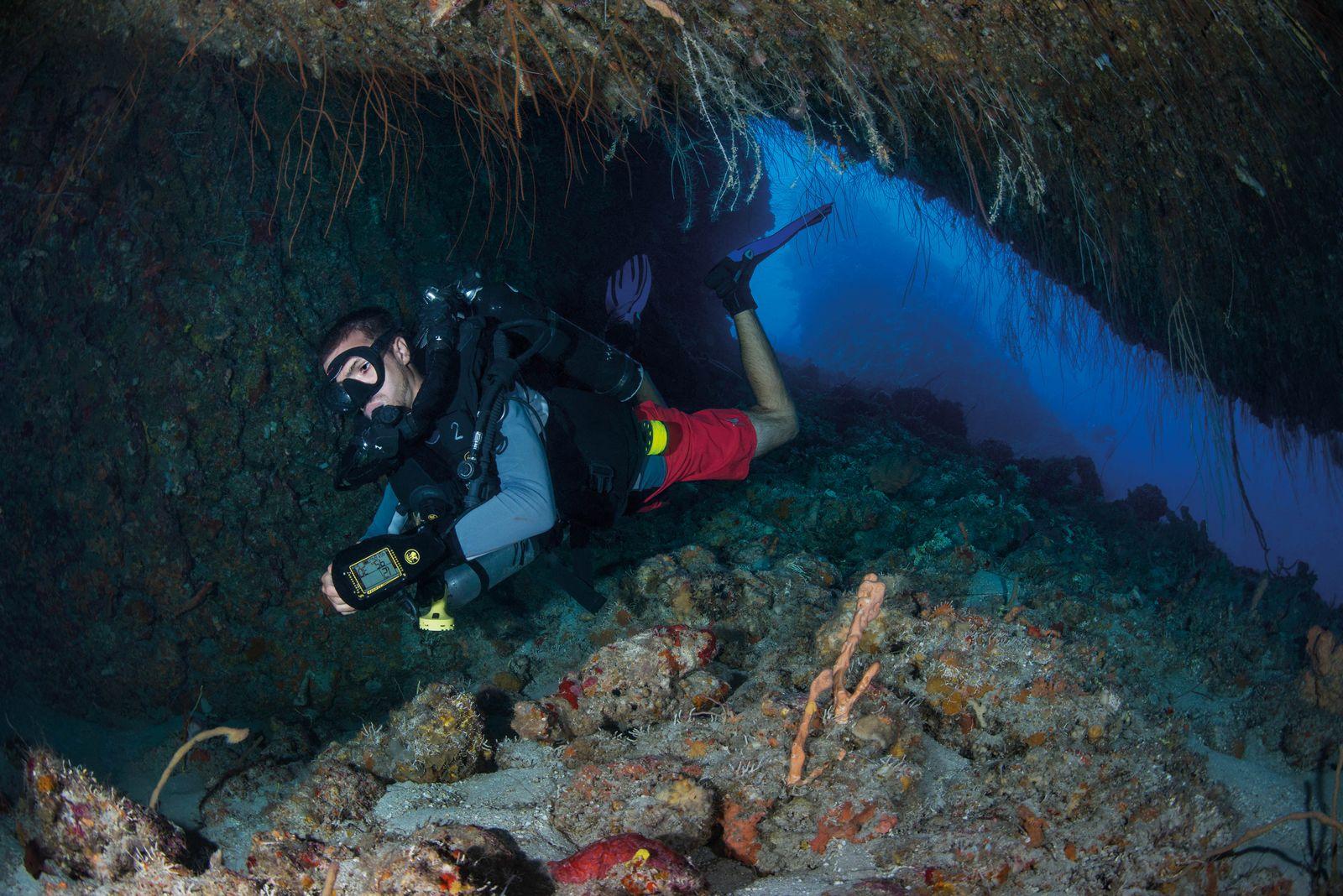
Embarrassingly I forgot to exhale on the ascent. The gas in the loop expands, thus increasing buoyancy. Exhaling through my nose easily remedies the problem – if only I had remembered! I got there in the end, but felt uneasy for several moments. How many hours did I have on rebreathers? I felt such an idiot. Jake was totally hooked on rebreathers, he said: “They are more hydrodynamic than twinsets so can move quicker, warmer due to moist gas and less deco all while using less gas. What more could you want?”
Utila Dive Center has totally cornered Utila’s tech-diving market. The PADI instructor programmes were proving to be very popular, which meant more divers were booking on the rebreather and sidemount courses. The tech trimix courses took longer to complete so there was slightly less requirement. Scott said it would take at least six days to qualify.
I have to admit that tech diving in tropical conditions does have its attractions. Utila Dive Center offered a good range of dive sites down to 90m and beyond, there was very little current to contend with and visibility usually exceeded 30m, not forgetting I could comfortably wear my super-duper board shorts.
Jake’s favourite tech site called Pumping Hill Banks had the added bonus of lionfish hunting. But do lionfish, tech diving and board shorts really mix? My imagination was beginning to run riot – it would only take one sneaky lionfish up the shorts and whoa! Just think of the pain and the swelling all while completing 30 minutes of deco stops. The thought alone was enough to bring tears to my eyes!
